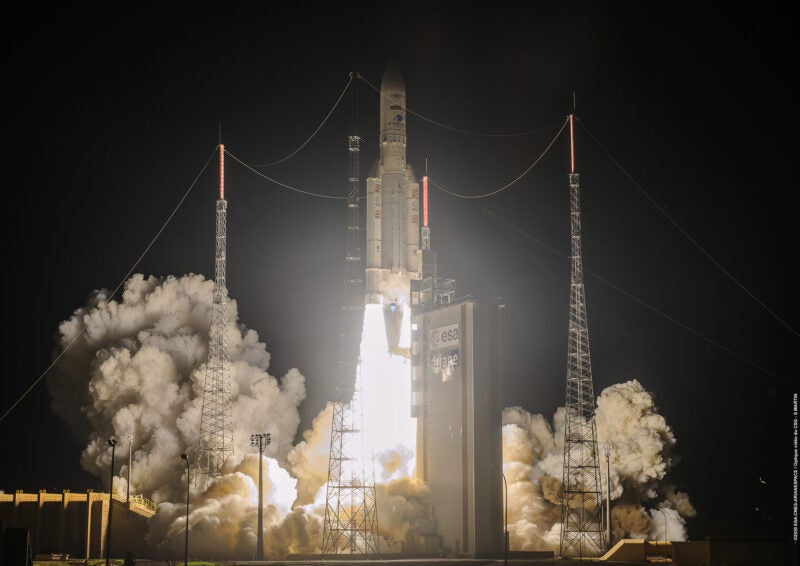Latest News

Arianespace flight VA253 carrying Galaxy-30, MEV-2, and BSAT-4b
Arianespace launched three spacecraft for Intelsat, SpaceLogistics LLC, and B-SAT on an Ariane 5 on Saturday, marking the launcher’s return to flight after the Guiana Space Center (CSG) in French Guiana was shut down due to the COVID-19 pandemic in March. The launch was delayed from July 28 to perform additional checks, from July 31 for a sensor malfunction, and from Aug. 14 due to weather.
Flight VA253 took off Saturday at 6:04 p.m. EST, lifting the trio of satellites to Geostationary Orbit (GEO). The rocket carried Galaxy 30 (G-30), Mission Extension Vehicle-2 (MEV-2), and BSAT-4b. For this flight, the Ariane 5’s payload capacity was increased by 85 kg with the introduction of a new Vehicle Equipment Bay (VEB). This brought total payload capacity to 10,200 kg.
G-30, built by Northrop Grumman, will provide UHD video distribution/broadcast and broadband services to North America, along with broadband and networks services. It is the first refresh in Intelsat’s Galaxy fleet, and the operator’s first four-spectrum satellite, featuring C-, Ku-, Ka- and L-band capabilities. It will replace Galaxy 14 and enter service in early 2021. The satellite is also carrying a U.S. Federal Aviation Administration (FAA) hosted payload for Leidos. Intelsat confirmed signal acquisition on Saturday at 7:02 p.m.
Jean-Luc Froeliger, vice president of Intelsat Space Systems Engineering & Operations described G-30 as the “first domino” in Intelsat’s refresh Galaxy fleet refresh. The satellite was procured before the FCC’s C-band order reallocating C-band spectrum for 5G, so Froeliger said Intelsat will groom its customers to use the upper half of the spectrum. Intelsat will not be reimbursed for this satellite.
Froeliger said that when the COVID-19 pandemic hit in March, the satellite was not yet complete, and Northrop Grumman put protections in place to protect its employees to finish the satellite. This launch also required extra coordination between Arianespace and fellow customer Maxar Technologies, including mandatory quarantines for staff who traveled to the launch site.
Froeliger said the work was not easy, and called the launch “a testament to our suppliers.”
Intelsat CEO Stephen Spengler said in a news release that the launch demonstrates Intelsat’s commitment to its North American media customers. “At Intelsat, we’re constantly innovating, investing in and upgrading our satellite fleet and terrestrial infrastructure. Galaxy 30 is a great example of how we help our customers stay ahead of evolving consumer demands, today and well into the future,” Spengler commented.
The second spacecraft, MEV-2, built by Northrop Grumman’s wholly-owned company, SpaceLogistics LLC, is designed to dock with satellites in orbit, offering life extension services. It will dock with Intelsat 10-02 in 2021 and service the satellite, which has been in GEO since 2004. MEV-2 will provide five years of life extension for this relay platform. It follows after MEV-1, which achieved a historic first of docking two commercial satellites in orbit in February. MEV-1 docked to the Intelsat 901 (IS-901) spacecraft, also marking the first time mission extension services were offered to a satellite in GEO.
The final spacecraft, BSAT-4b, will provide UHD Direct-to-Home (DTH) television broadcasting across Japan in conjunction with its twin, BSAT-4a which was launched by Arianespace in 2017. The satellite was built by Maxar, and will be operated by B-SAT. Maxar confirmed Saturday the satellite is performing according to plan.
Get the latest Via Satellite news!
Subscribe Now